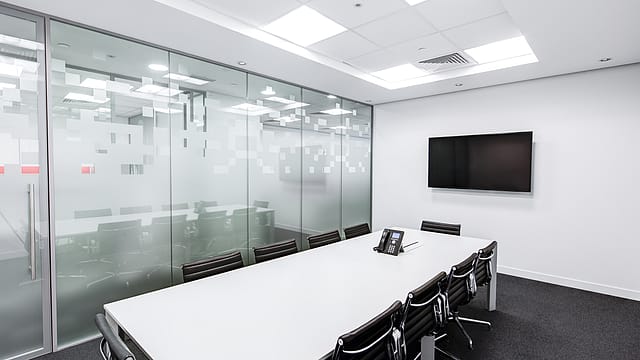Company boardrooms as idea airports
ADVERTISEMENT

Picture a company boardroom: Huge mahogany panelling, leather seats, teleconference devices and a projector. They are generally used once a year or once a quarter for board meetings of company directors from around the globe, or once a month for other important meetings where the C-suite is involved. Ergo: for about 200 days every year, the investments in premium real estate, and (likely outdated) technology, is lying idle. In a world where cost efficiencies and agile teams are the buzzwords, this seems like an absolutely foolish waste of resources.
Who used these boardrooms? And what is changing?
Traditionally, they were company leaders and board members— industry veterans of Mad Men-esque celebratory cigar and three-martini business lunches—whose word was law, and who operated outside the realms of the everyday employee. But things are changing rapidly.
First, the demography of the boardroom is changing, and it is not unusual to see 30- and 40-year-olds in C-suites. The composite sketch of the C-suite and the boardroom itself is also changing beyond the typical configuration of a president, chief executive office, and chief financial officer. Today’s boardroom usually has a chief innovation officer and an information technology expert, as well as the directors of communications and digital media.
Second, and the more important change, is that the employee profile of the organisation is changing. The mostly millennial employees need a starkly different type of organisation as a workplace, and they want to see different behaviours in their leadership. According to a survey conducted by Virtuali and Work Place Trends, nearly 50% of respondents said that they believed leadership is the empowerment of others. According to the survey, millennials value leaders who seek feedback from all employees and show a willingness to leave when leadership doesn’t meet standards.
December 2025
The annual Fortune 500 India list, the definitive compendium of corporate performance, is out. This year, the cumulative revenue of the Fortune 500 India companies has breached $2 trillion for the first time. Plus, find out which are the Best B-schools in India.
Third, and possibly the most important shift is the fact that digitalisation and social media have forever changed how we think about decisions, how we collaborate, and what we want from work and life. And in this lies the essential shift about what a boardroom should represent. It’s no more that revered hallowed place where only the powerful reside, but more a democratic, accessible setup where the organisation coexists, were collaboration is easy, and technology impresses not by its existence, but by what it achieves for the people in the room, for its people and for the organisation.
Organisational change begins at the top
If the boardroom is the place where decisions are taken, its construct clearly needs to change.
Organisational decision-making and innovation today is about the power of the collective. In a blog, John Serpa —author of Tethered: Reclaiming Human Interaction in a Mobile Device Addicted World, notes, “…most of the companies I work with present information sequentially—flipping slides and not interacting with the participants in their meetings... (rather than) create a kinetic interaction with data”. This kinetic interaction gives rise to innovation, and makes for improved decision making, but the technology in the room must enable it.
When everyone’s opinion matters, the boardroom must evolve from being an island to becoming the organisation’s ideas airport—where ideas land and take off. When this happens, more leaders and boards will start asking questions that ensure executives focus on the right issues, solve the right problems, and achieve the right results.
Collaboration is key
The challenge of leadership has always been to maximise the power of the collective. It was already becoming difficult to achieve this, at efficient costs in a globalised world. Enter the employee of today, who wants different things from the workplace. They want to work like they live. And in order to bring together the workforce, new ways of collaborating need to be used even to achieve the success of the past. Clearly investments in future-focussed collaboration are imperative if organisations are to plan for the future.
With this as the goal, the boardroom itself will need to then work backwards, visualising ways to foster a culture of collaboration across generations, geographies and time zones, so the organisation operates and innovates as one.
The leader and his/her working style and ecosystem needs to be the first to shift gears to achieve this. After all, how things are prioritised in the boardroom becomes the direction for the company at large.
BOX
Modern boardrooms: Five things to keep in mind
Modernise the design: Open, airy, and light colours make for great conversations— not heavy, dark colours and massive upholstery. Besides, your employees will love the new look.
Make technology seamless: It should be a part of, and not an addition to, the interior design.
Lessen the clutter: Drop the wires—hide them or use wireless connections to the internet or to each other. The more invisible the technology, the better it is.
Make it future ready: Think of usage 10 years from now. How will technology change, what are users likely to need, where will the users be? Invest in technology that makes the boardroom relevant for the future.
Save energy: Corporations and the technology they use are one of the biggest consistent guzzlers of global energy. Think about leading from the front and making your boardroom have a low carbon footprint.
Make IT your brand ambassador: Charity begins at home. Make your board room stand for what you want to showcase as an organisation and culture: Immersive, inclusive, seamless, brilliant and young. Use inclusive collaboration technologies from the board room and everywhere.
Views are personal.
The author is vice president -Asia Pacific at Prysm Inc.
